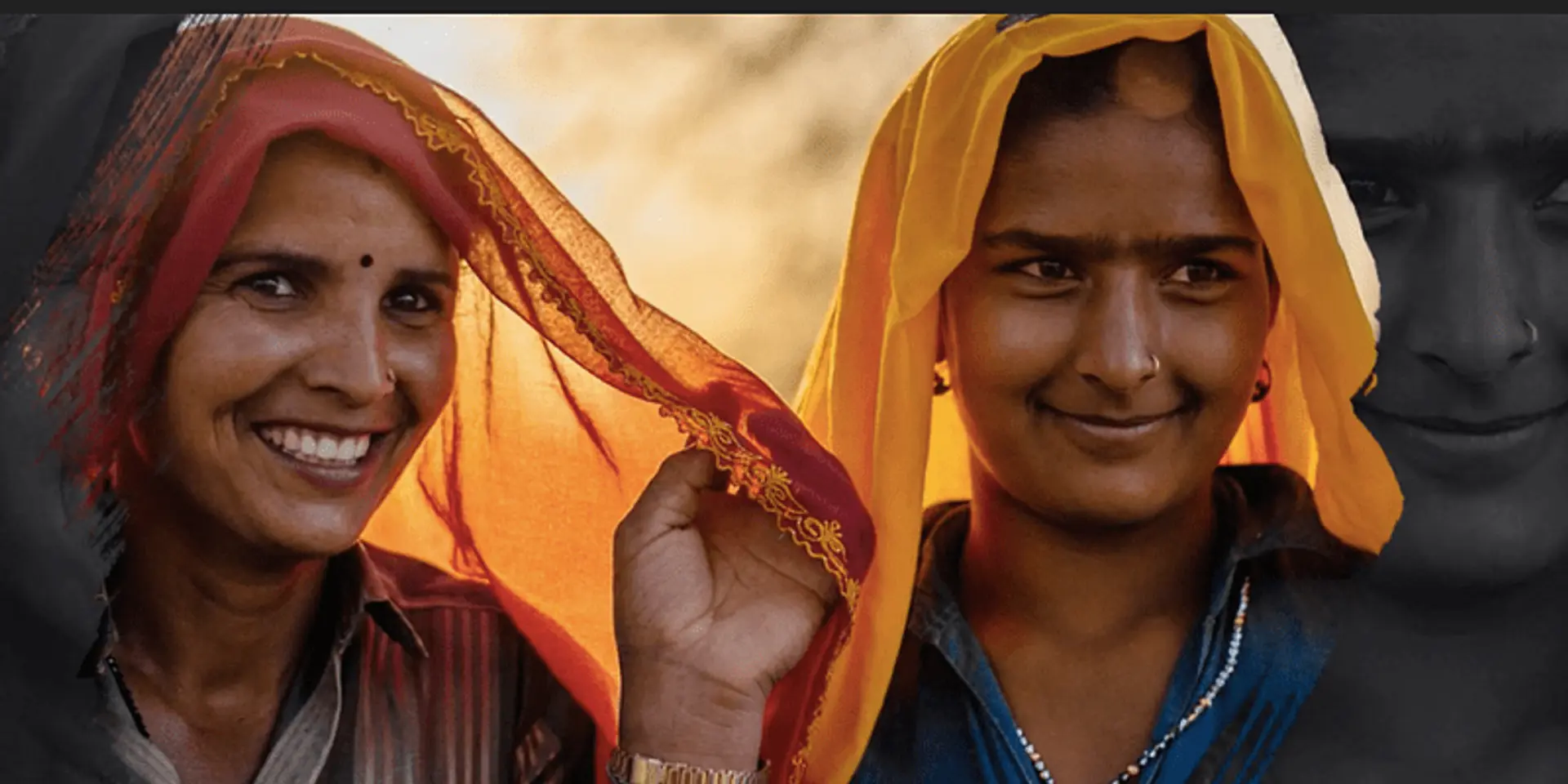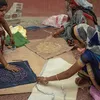For women to succeed as entrepreneurs, systems must be redesigned to retain them, not just allow entry
A recent EdelGive Foundation report highlights that if encouraged, women-owned businesses could grow up to 90 percent in the next five years.
According to a 2020 World Bank report, women account for only 19.9 percent of India’s labour force. Several factors have contributed to this low number, including societal expectations of the ‘woman’s place being at home’ as the primary caregiver. There is an additional stigma attached to her having to work outside the home — a sign that the man (primary breadwinner) is incapable of providing for his family.
Other factors include gender-based wage gaps and the absence of company policies around safety at the workplace. While the participation of women in the workplace has been declining steadily over the past few decades, the outbreak of the COVID-19 pandemic has only exacerbated this situation, studies suggest.
A Delhi government-commissioned survey conducted by the Centre for Market Research and Social Development found that the pre-COVID unemployment rate among women was 25.6 percent. In fact, this increased to 54.7 percent by October-November 2020 compared with 23.2 percent in the case of men.

Around 70 percent of women entrepreneurs surveyed by EdelGive said household chores were still their primary responsibility.
Women could make a significant contribution to the economy if they were given a level playing field. At present, women’s contribution is only 18 percent compared to the global average of 37 percent. According to McKinsey Global Institute, India could add $770 billion to its GDP by 2025 if women had equal opportunities.
Women entrepreneurs (WE) especially played a significant role in the economy, generating 150-170 million jobs, which will account for more than a quarter of the new jobs required for the entire working-age population by 2030, a joint report by Bain & Company and Google titled, ‘Entrepreneurship in India - Powering the economy with her' said.
However, WEs also faced significant challenges, including gaps in financial knowledge and resources, marketing, production, technological, and socio-cultural hurdles, and discouragement by their own families in favour of more ‘traditional jobs.’
Encouraging entrepreneurship
Speaking to SocialStory, Naghma Mulla, CEO of EdelGive Foundation, says, “We have to course-correct, and for course correction, they will have to be a systemic approach when multiple stakeholders come together.”
EdelGive Foundation — the philanthropic initiative of Edelweiss Group — is a grant-making organisation, which supports small to mid-sized grassroots non-government organisations working with vulnerable children, women, and communities.
The foundation’s UdyamStree initiative highlights the need to encourage women entrepreneurship through communication, collaboration, and a commitment to enabling and empowering women across India to become successful entrepreneurs.
A recent study by UdyamStree titled, “Landscape Study on Women Entrepreneurship” was a comprehensive survey across 13 states that focused on the challenges, impact on health, socio-economic security, and family wellbeing outcomes of WEs.
It showed that around 80 percent of women from semi-urban and rural India feel a significant improvement in their socio-economic and cultural status after starting an enterprise.
However, the findings of the report also pointed to several challenges. Around 70 percent of WEs surveyed said household chores were still their primary responsibility. In fact, it was against their ‘values’ to make their spouses or other family members pitch in.
The inability to expand their business was also down to the lack of time after taking care of their homes. Additionally, only less than 20 percent were confident of using public transport.
When asked if being financially independent has impacted domestic violence, 66 percent said there were no prior incidents to measure against. Of the remaining 34 percent of women who hinted that domestic violence existed, two-thirds felt it had either increased or not changed.
Families of all WEs across states acknowledged that they were consulted, and about two-third (65 percent) confirmed they were completely supportive of their idea of starting the enterprise.

The “Landscape Study on Women Entrepreneurship” was a comprehensive survey across 13 states that focused on the challenges, impact on health, socio-economic security, and family wellbeing outcomes of women entrepreneurs.
However, the good news was that with increased financial independence, 43 percent felt they could decide where they should get treated for illness, and 36 percent felt they had a say in the number of children they wanted to have.
Only one in seven WEs said that despite contributing to their family income, their status in the family has not changed.
“What you're seeing in the report is something that was due a long time ago. Every year, we are seeing that financial independence goes a long way in making a woman stand on her own feet, access and understand her rights so that she protects what she earns,” says Naghma, explaining EdelGive’s focus on issues around women, their subjugation, and economic empowerment.
Accessing reform
Addressing the policies that exist around supporting women, Naghma feels India is ahead in the game.
“Some of the most progressive laws and policies for women comes from India — whether it's a Protection of Women from Domestic Violence Act or POSH (The Sexual Harassment of Women at Workplace Act 2013. [Prevention, Prohibition and Redressal]) or the MUDRA scheme. To our horror, we found that less than 11 percent of the women were even aware of these schemes, and barely one percent had availed them,” she says.
The report recommends that different states conduct a meta-analysis to identify their specific needs, and design and implement relevant programmes, promote products from women entrepreneurs under a common brand with tax incentives, and impart soft-skills training, including accounting, HR management, and communication.
They should also implement awareness generation and community mobilisation initiatives for moral support and establish mentorship programmes at the local level to enable budding entrepreneurs to formalise their enterprise and expand.
“We are not just talking about charity here. We are saying that the system so far, whether it is procuring raw material, partner agencies, or funding, has been designed by men, keeping men in mind. All said and done, even till about 15-20 years ago, there wasn't this momentum,” Naghma explains.
She adds the foundation is hoping to build this momentum with the corporates to relook at their decision making to provide access to women to their infrastructure.
"Unfortunately, with women dropping off from the workforce or WEs shutting down their businesses, women have regressed to what they were a decade-and-a-half ago in terms of what they were able to do or earn," says Naghma
“If we get these things right, the possibilities that we see are significant because there's so much disruption. So we have to rebuild keeping this in mind. Over 120 million jobs can be created if this gender gap is bridged even by 25 percent. The gap is so large that even a small correction can go a long way,” she adds.

Mentorship is key for both men and women and can differentiate moderate success from great success.
Rebuild to retain
For women to be given a fair chance, there needs to be a comprehensive approach involving communities, stakeholders, access to markets, financial assistance to women, and mentorship.
Naghma believes mentorship is the key for both men and women and can differentiate moderate success from great success. Finally, the report indicates there has to be some amount of investment in upscaling.
For instance, the Self-Help Groups (SHGs), Naghma says, must be enabled on a larger scale for women to access markets and networks.
“We've seen massive successes of SHGs, and there are some basic reasons. One of the reasons women are not able to access opportunities is intellectual isolation, exclusion from decision making, and always second-guessing whether what they are doing is right or wrong. SHGs bring confidence building with an exchange of ideas. There's also an infusion of capital and a feeling that risk is being co-owned,” she explains.
She adds that SHGs are rooted in the regional context. Therefore, decisions taken for their businesses are also very contextual to their lives.
“A lot of the women-related solutions don't work because we are creating these brilliant structures without keeping our realities with all its diversity in mind. A woman from one state is urged to go out and make a living, while elsewhere may face the opposite situation. Both have subjugation and marginalisation, but if we don't understand where they're coming from, our solutions cannot be contextualised, and they won’t work,” she says.
“If we want to redesign systems keeping women in mind, it must not be just to have them enter but also to retain them. So, this is a very simplified version of what the report is talking about,” she concludes.
Edited by Suman Singh






![[Funding alert] AgroStar raises $70M Series D investment, will invest in tech and expansion](https://images.yourstory.com/cs/2/a9efa9c02dd911e9adc52d913c55075e/AgroStar-1638858370952.jpg?mode=crop&crop=faces&ar=1%3A1&format=auto&w=1920&q=75)
